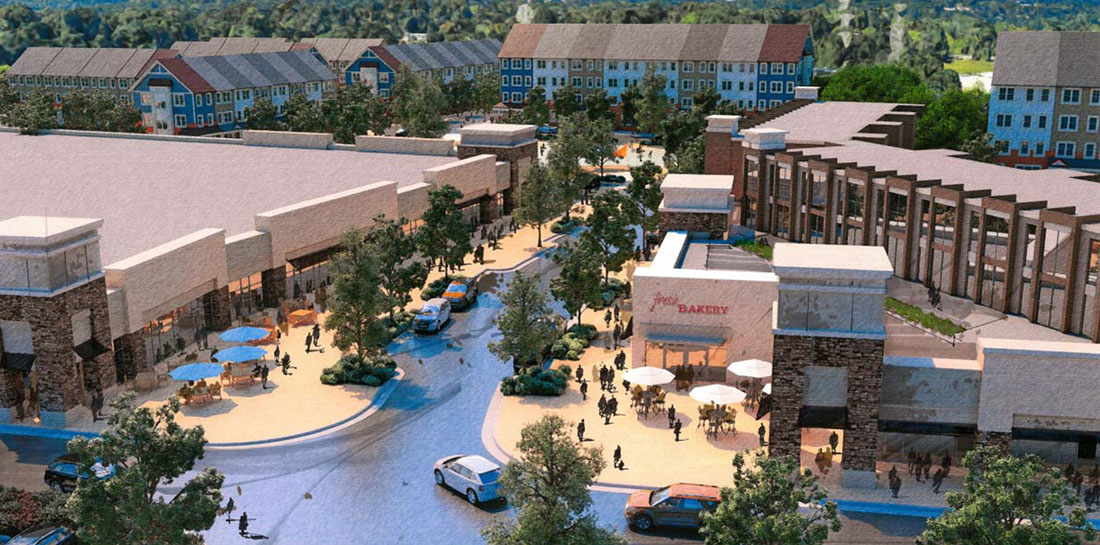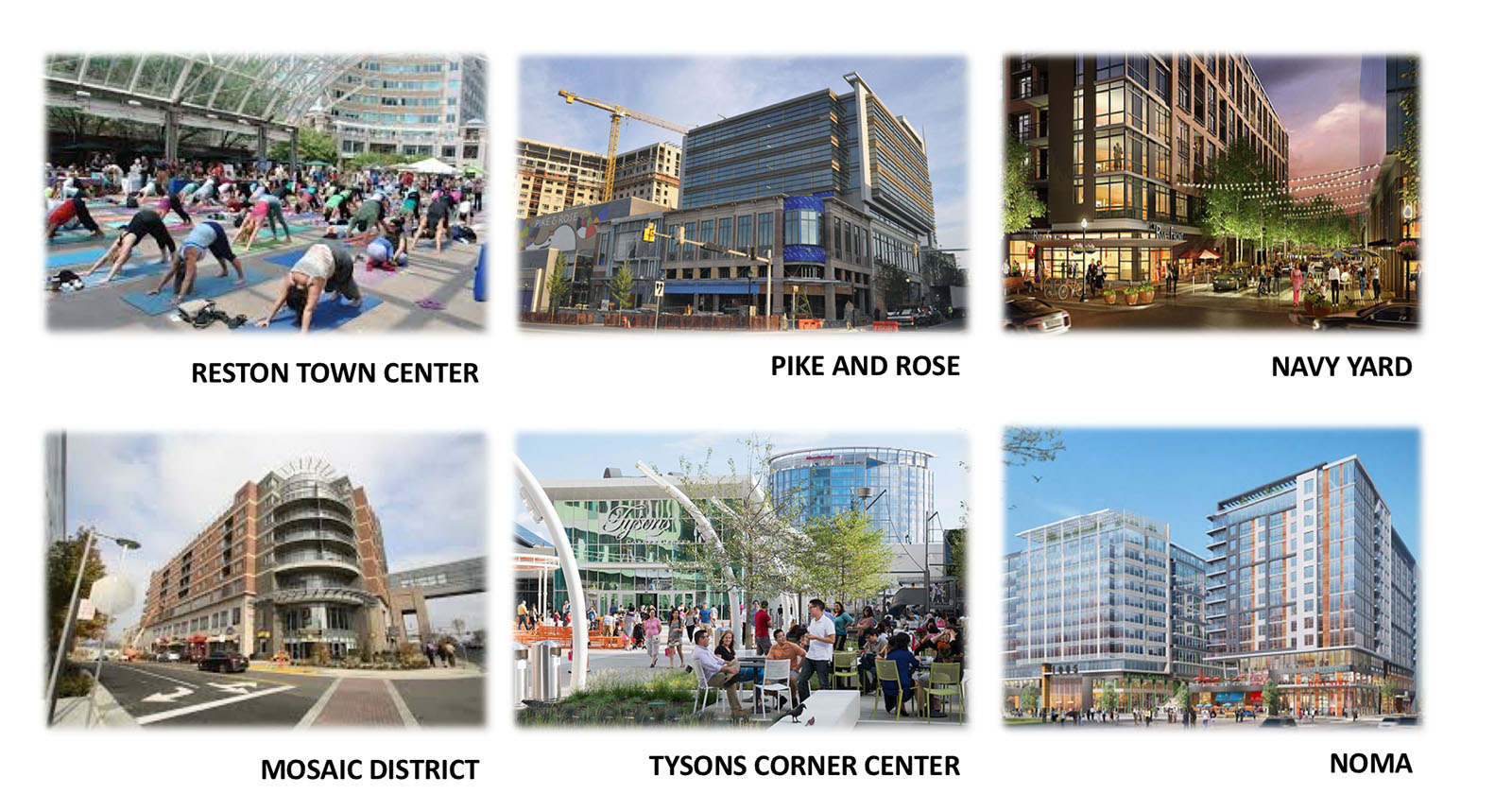Investing in more transit and walkable, amenity-rich neighborhoods will attract more residents and employers to Montgomery County
Both businesses and residents in Montgomery County increasingly show a preference for walkable, compact neighborhoods with a mix of uses. This kind of development is commonly described as “urban” in form, but its underlying design principles can be applied at lower densities and at smaller scale in suburban settings.
In Montgomery County, we have been encouraging this kind of development near existing Metro stations and our future Purple Line light rail stations. But we’ve also scaled down and used the same concepts – walkability, diversity of uses and compact design – where redevelopment offers an opportunity to add badly-needed housing and new amenities to older suburban neighborhoods. In Montgomery Village, where aging housing stock and a lack of reinvestment have resulted in high vacancy rates, the Planning Board recently approved the redevelopment of a 48-year-old retail shopping center with new housing and amenities.

Artist rendering of Montgomery Village Center redevelopment. Image courtesy Urban Ltd.
Not everyone wants to live in a city, but it’s clear that many young adults who are moving to the suburbs are being driven out of urban centers by high rents and home prices. In fact, as they move to the suburbs, Millennials are seeking some of the same things they left behind, such as convenient access to amenities. And it’s not just Millennials who want them. My parents, who are in their 70s, moved to an apartment building in downtown Silver Spring from their first retirement residence – a single-family house – when they decided that the idea of driving everywhere (not to mention mowing a lawn and managing the other tasks involved in maintaining a house) seemed less and less appealing. Across the age spectrum, an overwhelming majority of residents consider walkability and transit access important or very important factors in considering where to live. In fact, a recent study found that a majority of seniors think it’s very important or somewhat important to live in a walkable neighborhood:
This desire presents an opportunity for Montgomery County. If we can begin to close the housing supply gap and build the kinds of neighborhoods that residents prefer in the process, we can retain our highly skilled workforce and attract the kinds of employers who will contribute to our tax base. In turn, this revenue will allow us to invest in education, infrastructure and services that all our residents need.
Fortunately, there are lots of examples across the region – in Montgomery County, Prince George’s and Northern Virginia – where redevelopment has revitalized older suburbs and created desirable new neighborhoods in the midst of established communities:
The appeal and value of compact form, walkability and a mix of uses are not limited to neighborhoods with high quality transit service, but transit certainly helps. In addition to encouraging appropriate-scale development in our urban and suburban neighborhoods, we also need to invest in improving the quality and reach of transit. Transit connects low income residents, many of whom do not own cars, to jobs and educational opportunities. For this reason, it should be available to residents across the income spectrum – not just those who can pay a premium for scarce units near a limited number of transit stations. In a future post, I’ll discuss how we can make transit-oriented neighborhoods affordable for more residents.